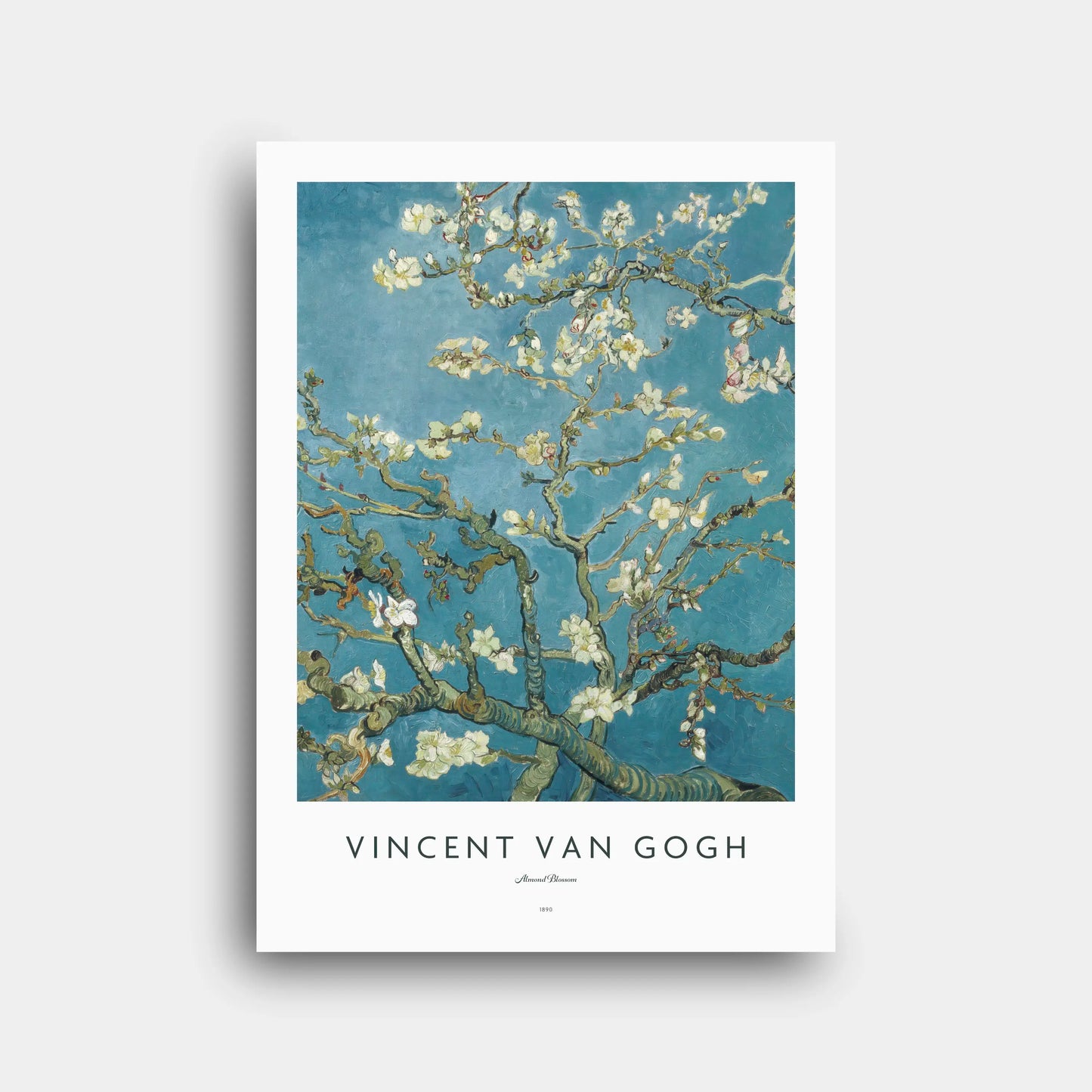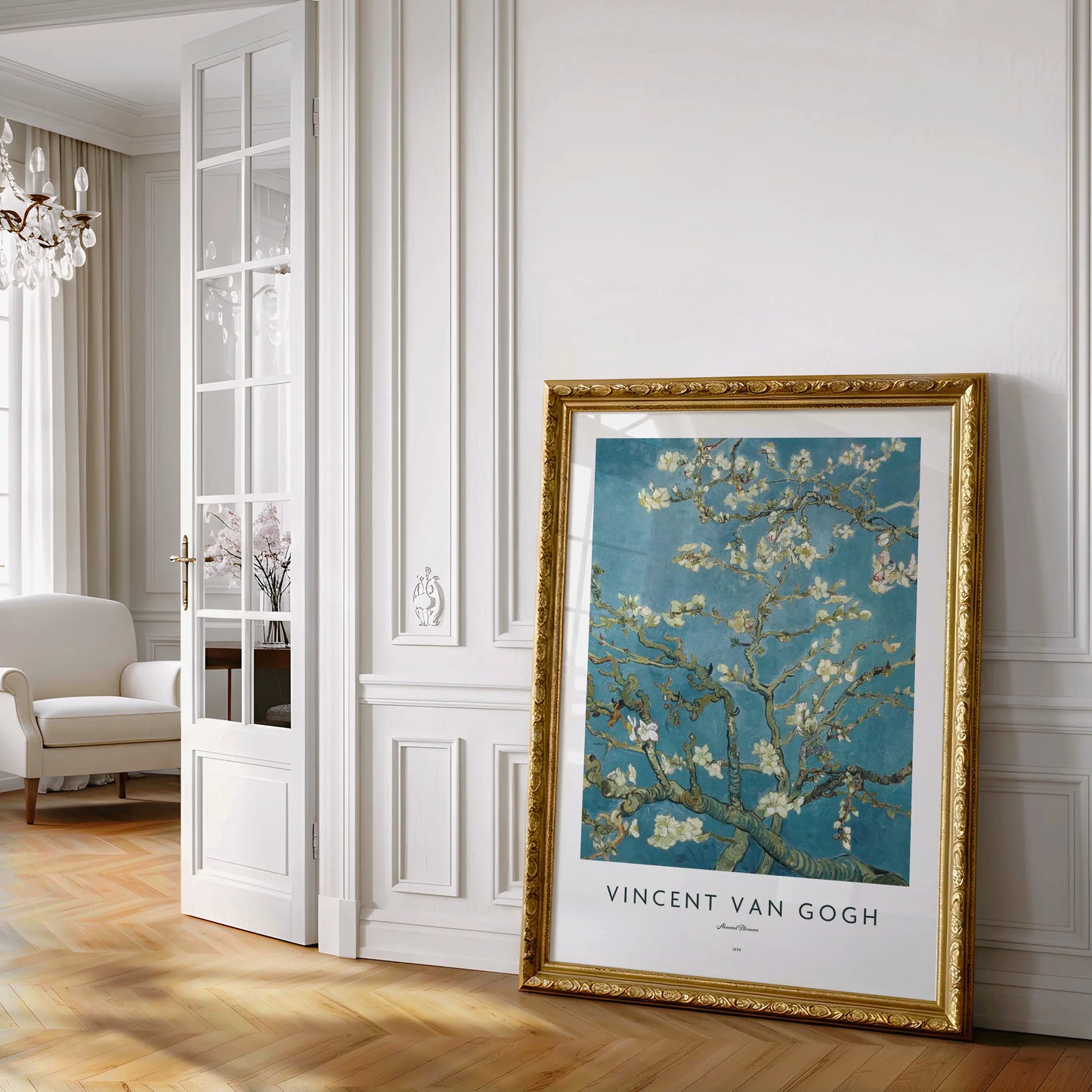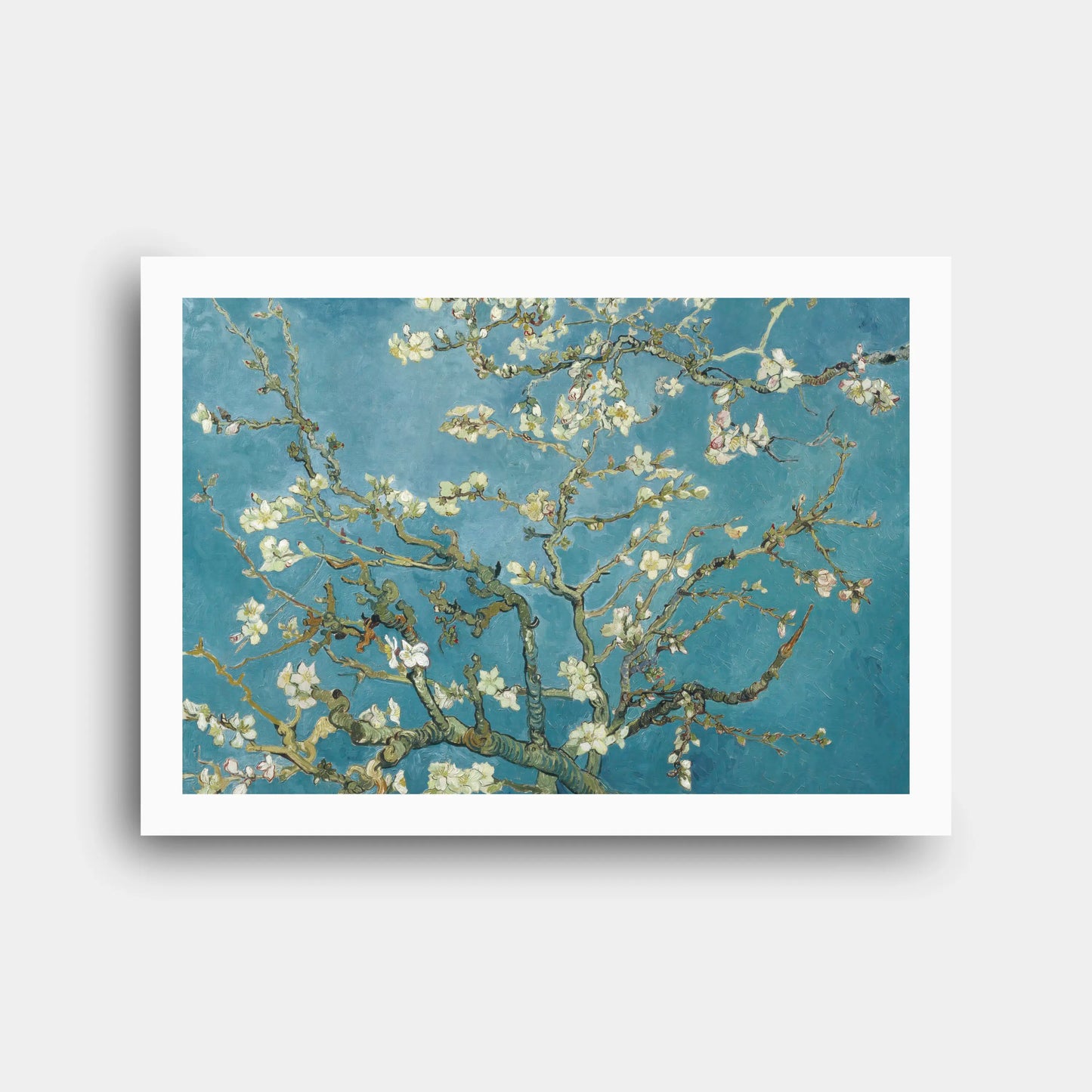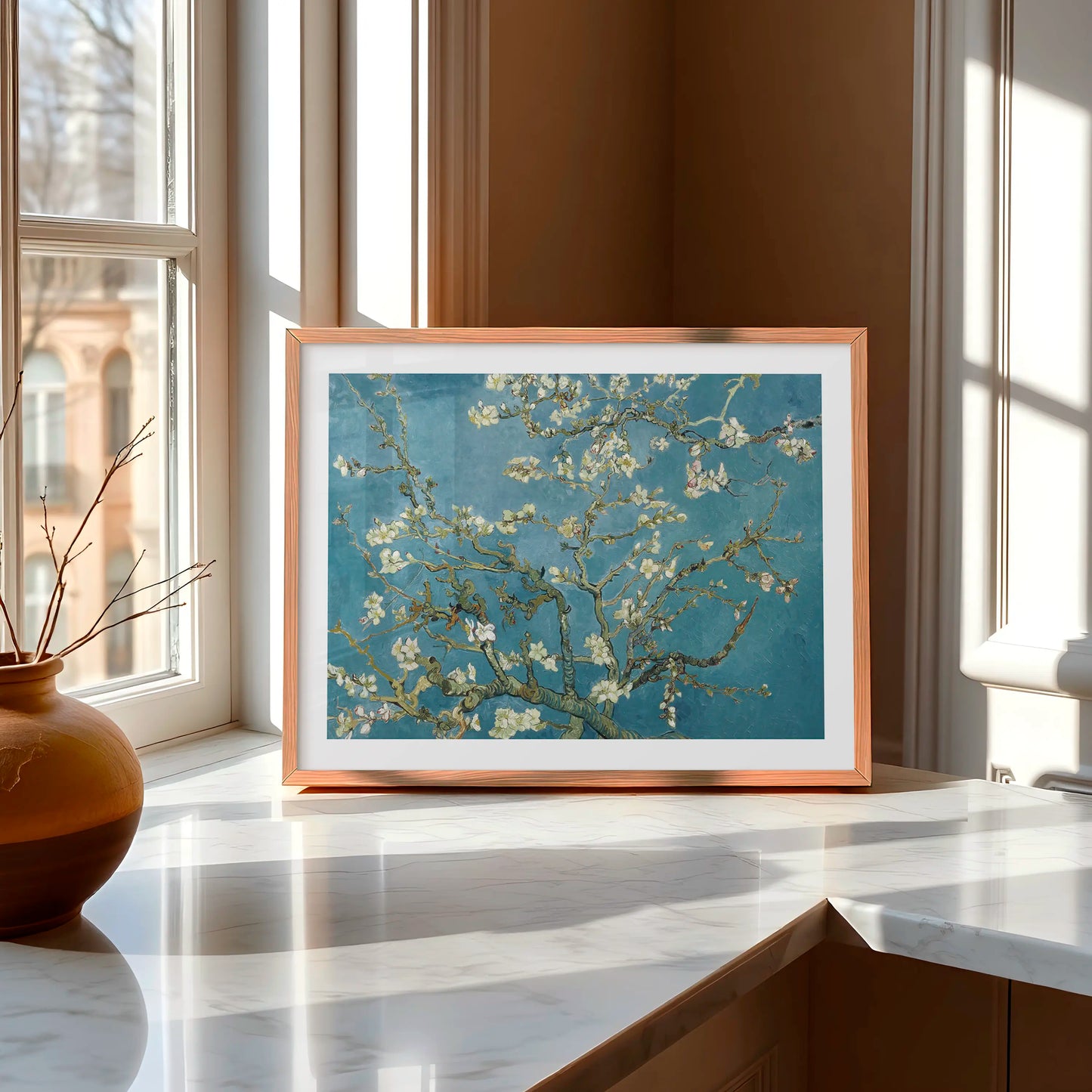Vincent van Gogh - Almond Blossom (1890) - Paper Poster N187
Vincent van Gogh - Almond Blossom (1890) - Paper Poster N187
Couldn't load pickup availability
Share
Paper Poster | Canvas Print | Digital File
1. Historical and Artistic Context
Vincent van Gogh painted Almond Blossom in 1890 in Saint-Rémy-de-Provence, a few months before his death. This work was created to celebrate the birth of his nephew, Vincent Willem, the son of his brother Theo and sister-in-law Jo. Unlike many of Van Gogh’s turbulent and emotionally charged paintings, this one radiates calmness and optimism. It reflects the artist’s deep joy at the continuation of life within his family, and at the same time shows his admiration for the cycles of nature. The painting situates itself within a tradition of symbolic art, but it also resonates with Van Gogh’s lifelong fascination with renewal and growth.
2. Technical and Stylistic Analysis
The painting is striking in its simplicity and clarity. Against a pure, bright blue background, delicate almond branches stretch diagonally across the canvas. The blossoms, painted in whites and soft pinks, contrast sharply with the sky, creating a harmonious yet dynamic composition. Van Gogh deliberately avoided depth or perspective, favoring a flat, decorative style. This stylistic choice reveals his admiration for Japanese art, particularly ukiyo-e woodblock prints. The use of contour lines, limited palette, and bold composition mark this as one of Van Gogh’s most refined and minimalist works. It is a demonstration of his ability to blend influences and personal expression.
3. Symbolism and Interpretation
The almond tree blossoms symbolize new life, hope, and rebirth. Van Gogh chose this motif specifically for his nephew’s birth, wishing to capture the essence of purity and vitality. The upward-reaching branches can be interpreted as aspirations toward the heavens, a metaphor for growth and spiritual elevation. The blossoms’ fragility emphasizes the delicate nature of life itself, but the strength of the tree represents endurance and resilience. The blue sky symbolizes clarity, serenity, and boundless possibility. For Van Gogh, this painting was both a personal blessing and a universal statement about the beauty and transience of existence.
4. Technique and Materials
Van Gogh painted Almond Blossom with oil on canvas, employing a technique of bold brushstrokes yet careful precision in the rendering of blossoms. The flowers are delicately outlined, highlighting their fragile nature, while the branches are painted with thicker, textured strokes. The palette is restrained: primarily blues, whites, greens, and soft pinks. This choice enhances the purity and elegance of the subject. Van Gogh’s mastery lies in balancing meticulous detail with expressive freedom. Unlike his more turbulent canvases filled with swirling strokes, here he demonstrates restraint and balance, showing another dimension of his artistic range.
5. Cultural Impact
Almond Blossom has had a profound cultural impact, symbolizing hope, renewal, and the fragile beauty of life. It has become an image widely reproduced in prints, posters, and decor, often chosen for its uplifting energy and calming effect. For many admirers of Van Gogh, the painting stands as a counterbalance to his reputation for emotional turmoil, highlighting his capacity for joy and serenity. In broader cultural contexts, it has been referenced in literature, fashion, and modern design, symbolizing the timeless connection between art, family, and the cycles of nature.
6. Critical Reception and Scholarly Interpretations
Critics and scholars view Almond Blossom as one of Van Gogh’s most personal works. Unlike his other paintings filled with visible struggle, this canvas reflects a moment of clarity and happiness. Some interpret it as a turning point, evidence of the peace he was searching for. Others argue it represents his ongoing dialogue with Japanese aesthetics and his desire to integrate their principles into Western painting. Art historians often emphasize the duality of fragility and resilience in the work, considering it both an intimate family gesture and a philosophical meditation on life itself.
7. Museum, Provenance and Exhibition History
The painting was gifted to Theo and Jo Van Gogh in 1890 to celebrate the birth of their child. Later, it remained in the possession of the family and was eventually donated to the Van Gogh Museum in Amsterdam, where it remains one of the most treasured works in the collection. The museum has displayed the painting in numerous exhibitions worldwide, presenting it as a symbol of hope and renewal. Its inclusion in retrospectives of Van Gogh’s art highlights the contrast between his emotional struggles and his capacity to produce works of great serenity.
8. Interesting Facts
1. Van Gogh painted this work just a few months before his death.
2. It was intended as a gift for his newborn nephew, also named Vincent.
3. The composition is heavily influenced by Japanese woodblock prints.
4. Almond trees bloom early, symbolizing the arrival of spring.
5. The painting stands out as one of Van Gogh’s most optimistic works.
6. The absence of a horizon gives the illusion of infinite space.
7. The branches seem to float, blurring reality and dream.
8. The work reflects Van Gogh’s fascination with simplicity and nature.
9. It remains one of the most reproduced Van Gogh images worldwide.
10. The original is displayed at the Van Gogh Museum in Amsterdam.
9. Conclusion
Almond Blossom is a unique jewel in Van Gogh’s oeuvre. Painted as a gift of love and hope, it departs from his usual emotional intensity and instead embraces clarity, serenity, and renewal. Its stylistic ties to Japanese art reveal his openness to diverse influences, while its symbolism connects to universal themes of life and fragility. Today, the painting continues to inspire with its timeless message of rebirth and resilience, reminding viewers that even in life’s most fragile moments, beauty and hope can flourish. It remains one of Van Gogh’s most enduring legacies.











